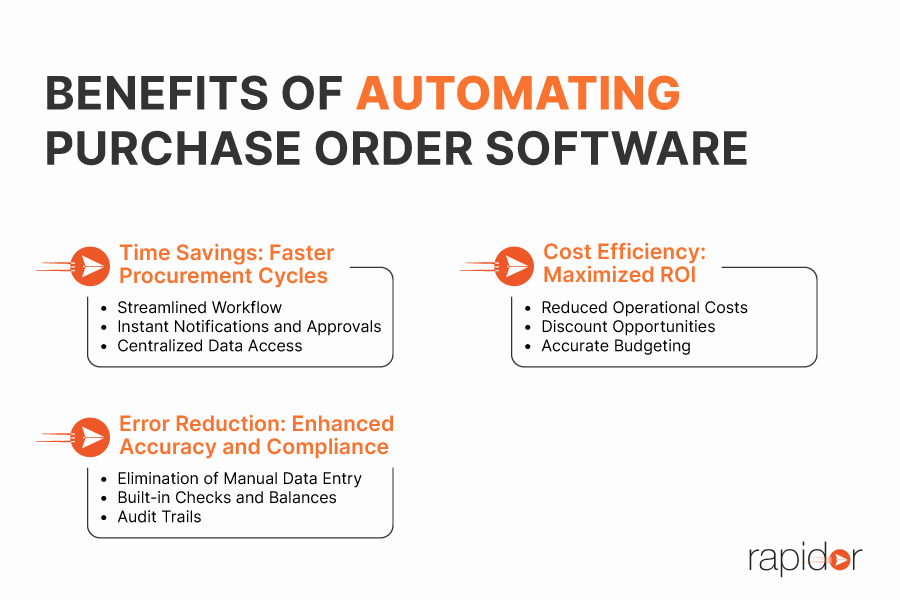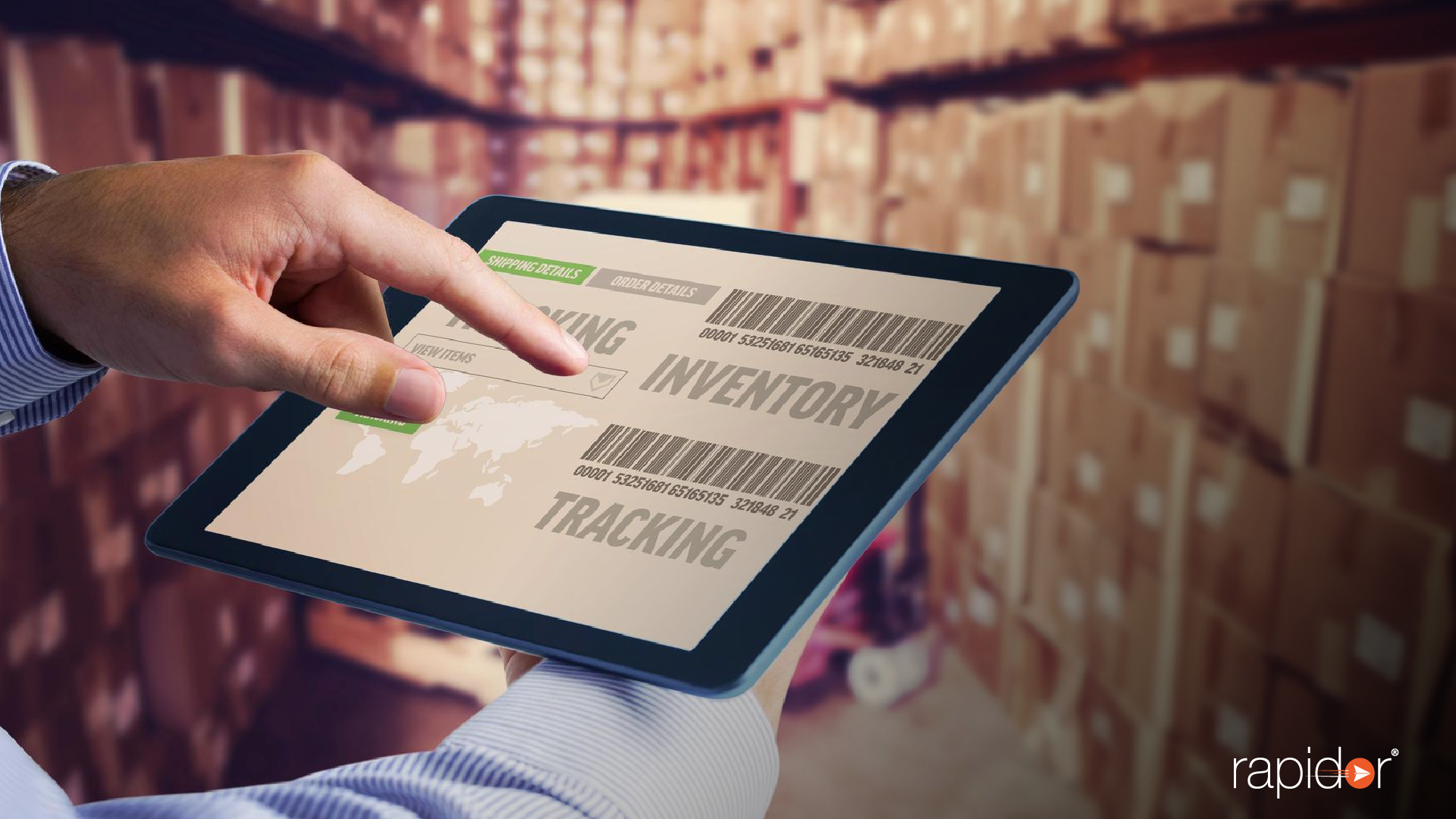In a world driven by digital transformation, staying reliant on manual processes can be a significant hindrance, especially in the domain of procurement.
The intricacies of purchasing processes may seem simple, but when scaled to an organisational level, it becomes a challenging task. This is particularly true when we discuss Purchase Orders (POs).
What is a Purchase Order (PO)?
A Purchase Order, commonly referred to as PO, is a formal document sent from a buyer to a supplier, signalling the intent to purchase specific products or services.
It contains details like product descriptions, quantities, prices, and other essential terms. This document is a legal offer that, once accepted by the seller, becomes a binding contract.
A critical component in the procurement process, a PO serves as a systematic and organised way to manage and record purchasing decisions.
What is the Traditional Manual Method and Its Drawbacks?
Traditionally, creating POs was a manual affair – often involving paper trails, physical signatures, and manual data entry into various systems.
Let’s delve into this method and its inherent challenges:
- Time-consuming Process
Manually creating a PO involves multiple steps – from jotting down requirements to getting approvals and then communicating the same to suppliers. Each step takes considerable time, delaying the entire procurement process.
- Prone to Human Errors
With the manual method, there’s always room for errors, whether it’s a typo in the product description or a miscalculated total. Such mistakes, while they might seem minor, can lead to significant financial discrepancies and even strained relationships with suppliers.
- Lack of Visibility
Without an online procurement management system, tracking the status of a PO can be a nightmare. One might end up spending hours chasing down paperwork, making phone calls, or sending numerous emails, just to ascertain the status of a single order.
- Higher Costs
Manual PO processes demand a greater human resource investment. Moreover, rectifying any errors adds to the costs, not to mention the lost opportunities because of delayed orders.
- Compliance and Auditing Challenges
Ensuring compliance with company or industry standards is difficult without an organised procurement management system. This disorganisation can also create hurdles during audits, as tracing back to a particular transaction or decision becomes an ordeal.
Why Automate Purchase Orders?
The digital era has ushered in countless tools and technologies that streamline business operations.
At the heart of this revolution lies automation – the key to enhancing productivity, accuracy, and efficiency. For businesses entrenched in the procurement sphere, leveraging procurement software becomes indispensable.
Why, you ask? The automation of Purchase Orders (POs) offers transformative benefits that can drastically improve the procurement process.
Let’s dive into some compelling reasons to automate your POs.
Time Savings: Faster Procurement Cycles
Streamlined Workflow
Unlike manual methods that require endless paperwork and follow-ups, an online procurement management system facilitates a seamless workflow. From raising a purchase request to getting approvals and notifying suppliers – everything is just a click away.
Instant Notifications and Approvals
With order management software, the need for physical meetings or constant back-and-forths over emails is eliminated. Stakeholders receive instant notifications, leading to quicker decision-making.
Centralised Data Access
Automation tools often centralise all procurement data, ensuring that stakeholders don’t waste time searching for documents or details. They can retrieve any PO or related document instantly, accelerating the entire procurement lifecycle.
Cost Efficiency: Maximised ROI
Reduced Operational Costs
Implementing procurement management software might seem like an investment initially, but in the long run, it results in significant savings. By reducing manual labour and administrative tasks, businesses can allocate resources to more strategic initiatives.
Discount Opportunities
Many procurement solutions offer features that highlight early payment discounts or bulk purchase offers from suppliers. Such features ensure businesses never miss out on a cost-saving opportunity.
Accurate Budgeting
Automation tools offer real-time insights into spending patterns, allowing businesses to forecast and budget more accurately. This financial clarity can lead to better capital allocation and financial planning.
Error Reduction: Enhanced Accuracy and Compliance
Elimination of Manual Data Entry
One of the most significant sources of errors in the traditional procurement process is manual data entry. Purchase order software eradicates this by auto-filling details, ensuring that every entry is accurate.
Built-in Checks and Balances
Advanced procurement management software comes with validation mechanisms. These systems cross-check details, ensuring discrepancies, if any, are flagged before a PO is finalised.
Audit Trails
Automation ensures that every action, change, or approval is logged. This not only makes the system transparent but also ensures that businesses remain compliant with internal and external regulations.
In case of discrepancies or audits, tracing back to a particular transaction is straightforward and hassle-free.

How to Automate the Purchase Order Process?
Embarking on the journey of automating your Purchase Order (PO) process is a step towards enhanced efficiency, accuracy, and profitability. However, as with any transition, the path to full automation requires strategic planning, selection, and execution.
Here’s a comprehensive guide on how you can seamlessly automate your PO process:
Choosing the Right Software
- Understand Your Needs
Before diving into the plethora of procurement software available, it’s essential to understand your organisation’s specific needs. Do you need a simple purchase order software or a comprehensive procurement management software that encompasses the entire procurement lifecycle?
- Research & Reviews
Spend time researching various procurement solutions in the market. Look at user reviews, ratings, and case studies. This will give you an idea of how well the software performs in real-world scenarios.
- Request Demos
Most reputable online procurement management system offer demos. Utilise these to gauge the software’s user-friendliness, features, and adaptability to your business processes.
- Scalability
As your business grows, your procurement needs will evolve. Opt for software that can scale with your growing demands, ensuring you don’t have to switch systems down the line.
Integrating with Existing Systems
- API Compatibility
The chosen procurement management software should seamlessly integrate with your existing systems, be it your ERP, accounting software, or inventory management system. This ensures a harmonised flow of data, minimising discrepancies.
- Data Migration
Transitioning from a manual to an automated process might require data migration. Ensure that your chosen software can handle this smoothly without data loss.
- Customization
Every business has unique processes. The ideal procurement solution should offer customization options, allowing you to tailor the software to align perfectly with your business operations.
- Security and Compliance
Integration should not compromise your data’s security. Ensure that the order management software adheres to industry-standard security protocols and is compliant with relevant regulations.
Training Your Team
- Work with the Software Vendor
Many procurement software vendors offer training sessions as part of their package. Collaborate with them to arrange comprehensive training for your team.
- Develop Training Modules
Create easy-to-understand training modules and documentation. This aids in reference and ensures that all team members are on the same page.
- Regular Feedback
As your team starts using the online procurement management system, encourage feedback. Understand their challenges and work on solutions. This iterative feedback process ensures continuous improvement.
- Stay Updated
Software solutions are continually evolving with updates and new features. Regularly train your team on these updates to maximise the software’s potential.
What are the Best Practices in Automated PO Management?
The automation of Purchase Orders (POs) is not just about implementing procurement software. It’s about leveraging its features to the fullest to transform and optimise the entire procurement process.
While transitioning to an online procurement management system can be a game-changer. The real benefits are reaped when businesses adhere to best practices in automated PO management.
Here’s a deep dive into some of these pivotal practices:
Approval Workflows
- Configurable Rules
With procurement management software, you can set up configurable rules that cater to your organisation’s hierarchy and approval matrix. Ensure that POs of different values or types go through the appropriate channels for approval, enhancing accountability.
- Sequential and Parallel Approvals
Depending on the complexity and urgency of a PO, utilise sequential (one after the other) or parallel (simultaneous) approval workflows. This flexibility ensures timely and efficient PO processing.
- Escalation Mechanisms
your order management software has provisions to escalate POs that are pending approval for too long. This ensures bottlenecks are addressed promptly, keeping the procurement cycle smooth.
- Audit Trails
Utilise the audit trail features in your procurement solution. It ensures transparency by recording every action, change, or approval, which can be invaluable during compliance checks or audits.
Vendor Management
- Centralised Vendor Database
Use your procurement management software to maintain a centralised vendor database. This repository should store all essential details, from contact information to performance metrics.
- Regular Vendor Assessments
Leverage the analytics from your software to periodically assess vendor performance. Consistent evaluations ensure you collaborate with only the best, optimising quality and delivery times.
- Automated Communications
Utilise automated notifications and reminders in your purchase order software. This ensures timely communications with vendors, reducing lags or misunderstandings.
- Document Storage
Store all vendor-related documents, from contracts to compliance certificates, within the system. Centralised storage ensures easy retrieval and reference, streamlining vendor interactions.
Real-time Tracking and Analytics
- Live PO Status
Opt for procurement solutions that offer real-time tracking. Being able to monitor the status of a PO – from initiation to fulfilment – provides unparalleled visibility and control over the procurement process.
- Customizable Dashboards
Utilise customizable dashboards to get a quick overview of key metrics, from pending approvals to vendor performance.
- Predictive Analytics
Advanced procurement software often comes with predictive analytics capabilities. Leverage this to forecast future procurement needs, budget allocations, and potential bottlenecks.
- Regular Reports
Schedule regular automated reports to keep stakeholders informed. Whether it’s a monthly procurement summary or a quarterly vendor performance report, consistent reporting aids strategic decision-making.
What is the RoIe of Purchase Order Automation?
In today’s fast-paced business environment, organisations are in a perpetual quest for tools and methodologies that can offer them a competitive edge.
One such tool that has garnered significant attention is procurement management software, specifically focusing on Purchase Order (PO) automation. But the pertinent question is, does automating the PO process truly offer a substantial Return on Investment (ROI)?
Let’s delve into the financial benefits and the intangible advantages of improved supplier relationships.
Financial Benefits
- Operational Cost Savings
Manually processing POs involves labour-intensive tasks and administrative overheads. By adopting purchase order software, businesses can significantly reduce these manual interventions, translating to direct savings in man-hours and operational costs.
- Error Reduction and Associated Savings
Human errors in POs, whether due to inaccurate data entry or oversight, can lead to costly rectifications. Automated procurement solutions minimise these errors, thereby averting potential financial setbacks from incorrect orders or disputes.
- Discount Capturing
Automation often facilitates better visibility into payment terms and early payment discounts. Using an online procurement management system, businesses can timely process invoices to capitalise on these discounts, enhancing cost efficiency.
- Inventory Management
Overstocking or stockouts can result in financial strains. The analytics and predictive capabilities of procurement management software can aid in optimising inventory levels, preventing unnecessary holding costs or lost sales.
Improved Supplier Relationships
- Timely Payments
With an order management software in place, businesses can ensure that invoices are processed and paid on time. Punctual payments foster trust and goodwill with suppliers, which can be instrumental in negotiating better terms or discounts in the future.
- Transparent Communication
Automation tools enhance communication clarity. Whether it’s sending automated notifications about order status or seeking clarifications, an efficient procurement process facilitated by software ensures transparency, reducing misunderstandings.
- Accurate Order Fulfilment
Automated systems ensure order accuracy, which means suppliers receive clear and correct purchase orders every time. This not only reduces the back-and-forth but also ensures that suppliers can fulfil orders efficiently, enhancing the overall business relationship.
- Performance Insights
Procurement management software often provides analytics into supplier performance. Regular feedback based on these insights can be shared with suppliers, helping them improve and align better with your business needs.
A partnership rooted in continuous improvement invariably strengthens supplier ties.
Conclusion
In the ever-evolving business landscape, automation stands as a beacon of efficiency and accuracy.
Automating the PO process through procurement software not only streamlines operations but also offers significant financial advantages. Businesses can revel in cost savings, reduced errors, and enhanced operational efficiency.
Furthermore, an improved procurement process fosters stronger supplier relationships, ensuring timely, accurate order fulfilment and transparent communication. As organisations pivot towards more sustainable and efficient practices, embracing procurement management systems becomes crucial.
In sum, automating the Purchase Order process isn’t just a modern trend – it’s a strategic move towards future-ready business operations.
Don’t let manual methods hold your business back. Dive into a future of streamlined processes, improved supplier collaborations, and boosted bottom lines!


